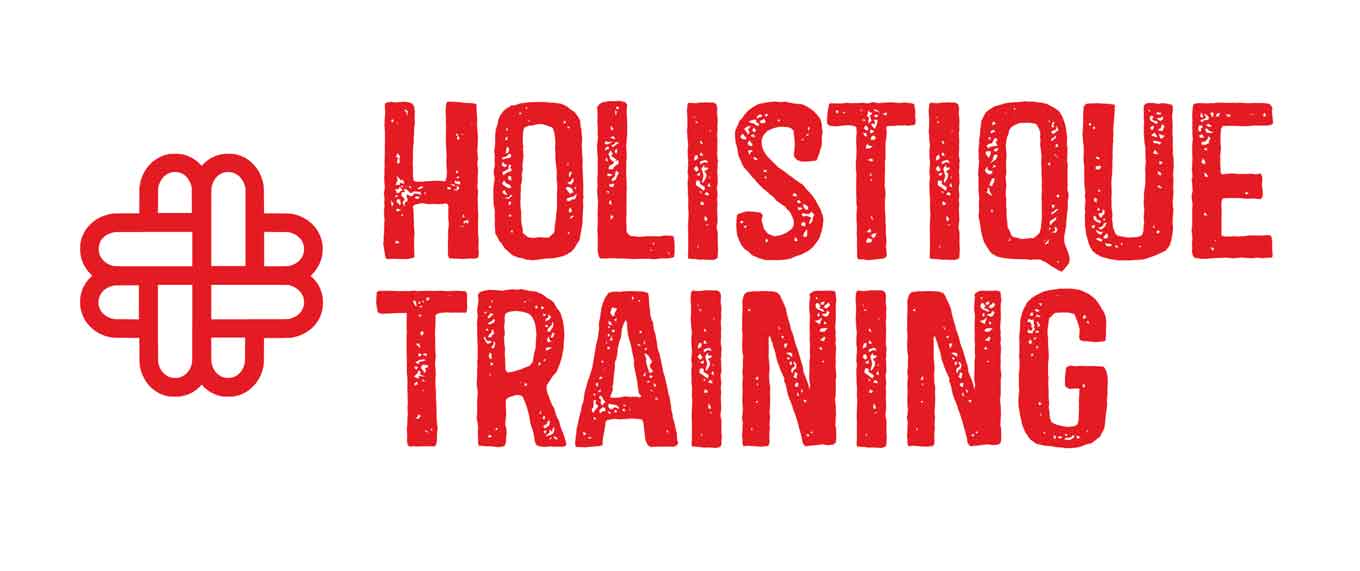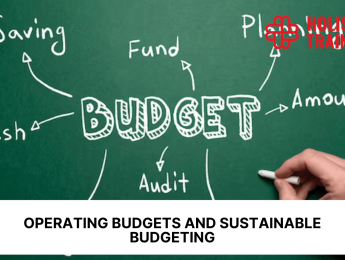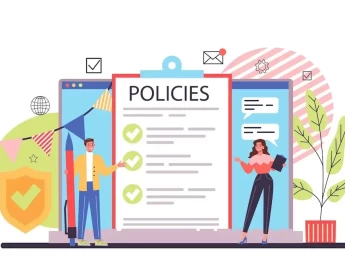- Table of Contents
- What Is an Operating Budget?
- Financial Roadmap:
- Revenue Projections as the North Star:
- Expense Compartments:
- Balancing Act:
- Quarterly and Yearly Perspectives:
- Risk Mitigation and Scenario Planning:
- Operating Budget vs. Capital Budget
- Components of an Operating Budget
- Operating Expenses
- Net Income (Profit/Loss)
- Cash Flow Projections
- Budget Assumptions
- Budget Variance Analysis
- Why Do You Need an Operating Budget?
- Financial Planning and Goal Setting
- Resource Allocation
- Expense Control
- Performance Monitoring
- How to Create an Operating Budget
- 1- Gather Historical Data
- 2- Set Clear Objectives
- 3- Sales Forecasting
- 4- Expense Categories
- 5- Expense Projections
- 6- Calculate Net Income
- 7- Cash Flow Projections
- 8- Budget Review and Approval
- 9- Implement and Monitor
- 10- Iterate and Adapt
- The Psychology of Budgeting - Behavioural Economics Perspective
- Technology's Role in Modern Operating Budgets
- Cloud-Based Solutions
- Predictive Analytics
- Automation
- Efficiency
- Data-Driven Decision-Making
- Flexibility
- Sustainability and the Green Budgeting Revolution
- Green Budgeting Definition
- Cost Savings and Efficiency
- Consumer Demand
- Government Incentives
Introduction
Managing the financial health of a business is akin to steering a ship through turbulent waters. It requires careful planning, clear direction, and an unwavering commitment to staying on course. One crucial tool in this financial navigation toolkit is the operating budget. An operating budget serves as a financial roadmap, helping businesses set goals, allocate resources, and monitor their financial performance. In this comprehensive guide, we will delve deep into the world of operating budgets, exploring what they are, why they are essential, and how to create one effectively.
What Is an Operating Budget?
An operating budget is the beating heart of a business's financial management. It's more than just a spreadsheet of numbers; it's a strategic financial plan that breathes life into a company's aspirations and ambitions. Let's dive deeper into the intricacies of what an operating budget truly entails.
At its core, an operating budget is a detailed, forward-looking financial blueprint. It paints a comprehensive picture of the financial landscape a business anticipates traversing in the upcoming fiscal year. But it's not just about number crunching; it's about making informed, proactive decisions that steer the ship toward financial prosperity.
Imagine it as a meticulously crafted road map, guiding you through the intricate network of roads and highways that represent your business operations. It's your GPS, ensuring you stay on the right route to reach your financial destination.
Financial Roadmap:
An operating budget is like a GPS for your business's finances. It provides precise directions on where your company is headed financially and how to get there. This is particularly vital in an ever-changing business environment, where market dynamics and economic conditions can shift abruptly.
Revenue Projections as the North Star:
At its heart, an operating budget revolves around revenue projections. These projections are the North Star by which you navigate your business journey. They involve forecasting income from diverse sources such as product sales, service offerings, licensing agreements, or any other revenue streams specific to your business.
These revenue projections are not just arbitrary figures; they are carefully researched and analysed. They take into account market trends, customer behaviour, competitive forces, and historical data. Each number represents a piece of the puzzle that, when combined, forms a clear picture of your expected financial performance.
Expense Compartments:
Think of expenses as the fuel that keeps your business engine running. In your operating budget, you dissect these expenses into various compartments, meticulously categorising them. This categorisation is akin to organising your tools in a toolbox, making it easier to access and utilise them as needed.
These expense compartments cover a wide range of operational costs. From the salaries of your dedicated workforce to the rent you pay for your office space, from the raw materials needed for production to the funds allocated for marketing campaigns – they all find their place in the budget.
Balancing Act:
One of the most remarkable aspects of an operating budget is its inherent balance. Just like a chef crafting a delicate dish, you must ensure that your expenses do not outweigh your projected revenue. Achieving this equilibrium is the essence of financial prudence.
Your budget allows you to set clear limits and boundaries. It says, "This is what you can spend, and this is what you can expect to earn." It provides a
check-and-balance system that safeguards your financial health.
Quarterly and Yearly Perspectives:
An operating budget takes a detailed view of your financial journey, often breaking it down into quarterly or monthly segments. This granularity allows for better visibility into potential fluctuations, enabling timely adjustments and course corrections.
For example, suppose you notice that sales are traditionally slower in the first quarter due to seasonal factors. In that case, your budget can help you allocate resources more conservatively for that period while ramping up in anticipation of busier seasons.
Risk Mitigation and Scenario Planning:
The business world is rife with uncertainties, from unexpected economic downturns to sudden shifts in consumer preferences. Your operating budget serves as a tool for risk mitigation and scenario planning.
By considering various "what-if" scenarios, you can prepare for the unexpected. For instance, what if your main supplier experiences a disruption, causing a shortage of critical materials? Your budget can help you model the financial impact and develop contingency plans.
In essence, an operating budget is not just a document; it's a strategic ally in your business journey. It empowers you to make informed decisions, adapt to changing circumstances, and, most importantly, stay in control of your financial destiny. Like a skilled captain, you use it to navigate the turbulent waters of business, guiding your ship towards your desired financial destination with confidence and precision.
Operating Budget vs. Capital Budget
Before we delve further into the components and creation of an operating budget, let's clarify a common point of confusion: the difference between an operating budget and a capital budget.
Differences in Time:
Operating Budget
Focuses on the short-term financial activities of a business, typically covering a one-year period. It deals with the day-to-day expenses required to keep the business running smoothly.
Capital Budget
Takes a longer-term view, often spanning several years. It is concerned with major investments in assets, such as equipment, machinery, or real estate. These investments are usually of significant value and have a long-lasting impact on the business.
Type of Asset:
Operating Budget
Primarily deals with expenses related to the maintenance and operation of existing assets. For example, it includes costs for employee salaries, utilities, raw materials, and marketing.
Capital Budget
Focuses on investments in new assets or significant upgrades to existing ones. These may include purchasing new manufacturing equipment, expanding facilities, or acquiring a fleet of vehicles.
Type of Purchase:
Operating Budget
Covers routine, recurring expenses. These are essential for the day-to-day functioning of the business and do not lead to significant asset acquisition or enhancement.
Capital Budget
Involves substantial, one-time expenditures aimed at acquiring or improving assets. These investments often involve a thorough evaluation process and have a long-term impact on the company's operations.
Table 1: This table provides a concise overview of the key differences between an Operating Budget and a Capital Budget
Aspect | Operating Budget | Capital Budget |
Time Frame | Typically covers one fiscal year | Often spans several years |
Type of Assets | Focuses on existing assets, routine expenses | Deals with new or major assets, significant investments |
Type of Purchases | Involves recurring expenses for day-to-day operations | Includes substantial, one-time expenditures |
Examples | Salaries, utilities, marketing, rent | Equipment purchase, facility expansion, real estate acquisition |
Frequency of Review | Regular review and adjustment, often monthly or quarterly | Periodic review, typically annually |
Financial Impact | Short-term financial health and performance | Long-term financial planning and asset management |
Risk Level | Lower risk associated with routine expenses | Higher risk due to significant capital investments |
Investor Perception | Demonstrates operational stability | Indicates strategic growth and expansion |
Approval Process | Reviewed and adjusted more frequently | Requires thorough evaluation and approval |
Common Uses | Day-to-day resource allocation and expense control | Long-term strategic planning and asset acquisition |
Examples of Expenses | Salaries, rent, utilities, marketing, supplies | Machinery, buildings, vehicles, IT infrastructure |
Components of an Operating Budget
Now that we understand the distinction between operating and capital budgets, let's dive into the core components of an operating budget. Think of these components as the building blocks that form the financial structure of your business's operations:
Revenue Projections
At the heart of your operating budget lies revenue projections. This section outlines the expected income from various sources, such as sales, services, royalties, or licensing fees.
A detailed breakdown of sales forecasts, including product or service categories and sales channels, provides valuable insights for planning and decision-making.
Operating Expenses
This section outlines all the costs associated with running your business. It includes both fixed costs (expenses that remain constant, like rent) and variable costs (expenses that fluctuate with activity, like materials).
Common expense categories include personnel, rent, utilities, supplies, marketing, insurance, and administrative costs.
Net Income (Profit/Loss)
Calculate the net income by subtracting total expenses from total revenue for each quarter and the entire year. Positive net income indicates profitability, while negative net income signals a potential loss.
Cash Flow Projections
Understanding cash flow is crucial for maintaining liquidity. Create a cash flow projection that shows when you expect to receive income and when you need to make payments.
This can help you identify periods of surplus or potential cash shortages.
Budget Assumptions
Clearly state the assumptions and factors influencing your budget. This transparency makes it easier to track actual performance against the budget and adjust as needed.
Budget Variance Analysis
As the year progresses, regularly compare actual financial performance to your budgeted numbers. Analyse any significant variations and adapt your strategies accordingly.
Why Do You Need an Operating Budget?
Operating budgets are indispensable tools for businesses of all sizes and industries. Here are some compelling reasons why you need one:
Financial Planning and Goal Setting
An operating budget helps you set clear financial objectives for your business. It provides a roadmap for where you want to be financially in the coming year.
By breaking down revenue and expense projections, you can set specific targets for sales growth, cost reduction, or profit margins.
Resource Allocation
Efficient resource allocation is vital for optimising your business's performance. An operating budget helps you allocate resources (both financial and human) to the areas that need them the most.
For example, if you see that marketing expenses are driving sales growth, you can allocate more funds to this department.
Expense Control
Budgets act as a built-in control mechanism. They help you keep a close eye on expenses and identify any potential overspending.
When you track your actual expenses against the budget, you can take corrective actions promptly.
Performance Monitoring
With an operating budget in place, you have a benchmark against which to measure your actual financial performance.
This allows you to spot trends, identify areas that need improvement, and make informed decisions to enhance your bottom line.
Investor and Lender Confidence
If your business seeks external funding or investment, a well-prepared operating budget demonstrates your commitment to financial transparency and responsible management.
It instals confidence in investors, lenders, and stakeholders, making your business a more attractive prospect.
How to Create an Operating Budget
Now that we've covered the fundamentals of operating budgets and their importance, let's explore how to create one effectively. Follow these steps to develop a robust operating budget for your business:
1- Gather Historical Data
Begin by collecting historical financial data, including past income statements, balance sheets, and cash flow statements.
This information serves as a foundation for your budget, providing insights into past performance and trends.
2- Set Clear Objectives
Define your financial goals and objectives for the upcoming year. What do you want to achieve? Be specific about revenue targets, cost control measures, and profit margins. Make sure your goals are SMART. These objectives will guide your budgeting process.
3- Sales Forecasting
Estimate your sales revenue by considering factors such as market trends, historical sales data, and current economic conditions.
Break down your sales projections by product or service category and by month or quarter, depending on your business's seasonality.
4- Expense Categories
Identify and categories all the expenses associated with your business operations. Common categories include personnel costs, rent, utilities, marketing, and administrative expenses. Be thorough in listing all possible expenses to ensure nothing is overlooked.
5- Expense Projections
Create detailed expense projections for each category based on historical data, industry benchmarks, and your business's specific circumstances.
Be realistic and conservative in your estimates, accounting for potential cost increases.
6- Calculate Net Income
Subtract total expenses from total revenue to calculate your net income for each quarter and the entire year.
Analyse the results to ensure they align with your financial objectives.
7- Cash Flow Projections
Develop a cash flow projection that outlines when you expect to receive income and when you need to make payments. This helps you plan for potential cash flow challenges and ensures you can cover your financial obligations.
8- Budget Review and Approval
Review the budget with key stakeholders, such as department heads or managers, to gain their input and insights.
Make any necessary adjustments based on feedback and ensure everyone is aligned with the budget.
9- Implement and Monitor
Once the budget is approved, implement it and monitor your actual financial performance closely.
Regularly compare actual results to the budget, analysing any variances and taking appropriate action.
10- Iterate and Adapt
Business conditions can change rapidly. As such, your operating budget should not be set in stone. Continuously review and adjust the budget as needed to respond to unforeseen challenges or opportunities.
The Psychology of Budgeting - Behavioural Economics Perspective
Budgeting isn't just about numbers; it's also about understanding the human behaviour and biases that can impact financial decisions. Behavioural economics, a field that combines insights from psychology and economics, sheds light on why individuals and organisations sometimes deviate from their budgets.
One common behavioural bias is known as "optimism bias." This bias leads people to overestimate the likelihood of positive outcomes and underestimate potential risks. In the context of an operating budget, optimism bias can lead to overly ambitious revenue projections or underestimation of expenses, ultimately resulting in budget shortfalls.
Conversely, there's the "loss aversion" bias, where individuals and organisations are more averse to losses than they are motivated by equivalent gains. In the context of an operating budget, this bias may lead to excessive caution, causing businesses to cut costs too aggressively, potentially hampering growth opportunities.
Understanding these behavioural biases is crucial for budgeting success. It allows businesses to incorporate these human tendencies into their budgeting processes, making them more realistic and resilient.
For example, recognising the optimism bias might lead a company to incorporate a contingency plan in its operating budget, setting aside reserves for unexpected challenges. Similarly, understanding loss aversion can help businesses strike a balance between cost-cutting and investment to optimise long-term growth.
Technology's Role in Modern Operating Budgets
As businesses adapt to the fast-paced and ever-changing world of finance, technology has emerged as a pivotal driver of efficiency and effectiveness in the realm of budget management. From cloud-based solutions that foster real-time collaboration to predictive analytics that enhance financial forecasting, technology is reshaping the way operating budgets are created and managed. Let's delve into the transformative role of technology in modernising the budgeting process:
Cloud-Based Solutions
Cloud-based budgeting solutions have revolutionised how businesses approach budget management. These platforms offer accessibility and collaboration like never before, as they allow real-time updates and remote teamwork. Team members from different locations can simultaneously contribute to and access budget data, enhancing transparency and efficiency in the process.
This cloud-based accessibility ensures that budget information is always up-to-date and readily available to decision-makers. It eliminates the need for sharing large files through email or dealing with version control issues, streamlining the entire budgeting process.
Predictive Analytics
Artificial intelligence (AI) and machine learning (ML) bring predictive analytics into the budgeting sphere. These technologies can analyse historical financial data, identify patterns, and provide more accurate forecasts. For instance, they can predict future revenue based on past sales trends, helping businesses make more precise revenue projections.
Predictive analytics can also assist in identifying cost-saving opportunities. By analysing expense data and recognising inefficiencies, businesses can make informed decisions about where to cut costs or optimise spending, ultimately improving their bottom line.
Automation
Automation is a game-changer in budgeting. Repetitive tasks, such as data entry and report generation, can be automated, reducing the risk of errors and significantly speeding up the budgeting process. This automation not only saves time but also enhances the accuracy and consistency of budget-related tasks.
With automation, financial professionals can redirect their efforts toward strategic analysis and decision-making. Instead of spending hours on data entry, they can focus on interpreting financial data, identifying trends, and developing strategies to meet financial goals.
Efficiency
The integration of technology in budgeting leads to overall efficiency gains. Budgets can be created and managed more rapidly and accurately, reducing the administrative burden associated with traditional manual budgeting processes.
Efficiency gains also extend to data collection and consolidation. Technology allows for seamless integration of financial data from various sources, eliminating the need for manual data entry and minimising the risk of data discrepancies.
Data-Driven Decision-Making
Advanced software and tools provide businesses with valuable data insights that empower data-driven decision-making. By analysing financial data, businesses can identify key performance indicators, assess their financial health, and make informed decisions to optimise their budgeting strategies.
Data-driven decision-making enables businesses to allocate resources more effectively, identify areas of potential growth, and mitigate risks proactively. It ensures that budgeting decisions are based on empirical evidence rather than intuition or guesswork.
Flexibility
Modern technology adds a layer of flexibility to the budgeting process. Budgets can be adjusted quickly and efficiently in response to changing business conditions, new opportunities, or unforeseen challenges. This adaptability ensures that budgets remain relevant and aligned with the dynamic nature of business operations.
Whether it's scaling up resources to seize a growth opportunity or reallocating funds to address unexpected expenses, technology-equipped budgeting systems provide the flexibility needed to keep financial plans agile and responsive.
Sustainability and the Green Budgeting Revolution
Incorporating sustainability into budgeting has become a critical aspect of modern business practices. Here are key points that highlight the significance of sustainability in financial planning:
Green Budgeting Definition
Green budgeting is a multifaceted approach that goes beyond traditional financial planning. It involves integrating environmental considerations into every facet of budgeting. This encompasses evaluating the sustainability of supply chains, energy consumption, waste management, and various other eco-related factors. In essence, it's about ensuring that your financial decisions align with responsible environmental practices.
Cost Savings and Efficiency
Sustainability and cost savings go hand in hand. While there may be an initial investment in eco-friendly technology or processes, these often lead to significant cost reductions over time. For instance, adopting energy-efficient technology can lower utility expenses, making your operations not only greener but also financially more efficient.
Additionally, sustainable practices can result in reduced waste and resource consumption, further contributing to cost savings. Green budgeting encourages businesses to identify areas where sustainability can lead to financial efficiency.
Consumer Demand
Today's consumers are increasingly eco-conscious. They actively seek out products and services from businesses that demonstrate a commitment to sustainability. Therefore, integrating green practices into your budget is not just about reducing costs; it's about enhancing your brand reputation and market appeal.
By aligning your financial goals with sustainability initiatives, you not only attract environmentally conscious consumers but also create a positive image for your brand. This can lead to increased customer loyalty and a broader customer base.
Government Incentives
Many governments and regulatory bodies worldwide are actively promoting sustainability through financial incentives. These incentives may include tax breaks, grants, or subsidies for businesses that undertake green initiatives.
Incorporating sustainability into your budgeting process positions your business to take advantage of these incentives, which can significantly impact your bottom line. It's an opportunity to simultaneously benefit from cost savings and government support for your eco-friendly endeavours.
Environmental Responsibility
Beyond financial considerations, green budgeting reflects a broader commitment to environmental responsibility. It's a declaration that your business acknowledges its role in environmental stewardship. Sustainability isn't just about chasing profit; it's about recognising the shared responsibility to protect our planet for future generations.
By embracing green budgeting, you contribute to a cleaner environment, reduced carbon emissions, and more responsible resource usage. This aligns your business with societal expectations for ethical and sustainable practices.
Economic and Ecological Success
Ultimately, green budgeting represents a holistic approach to financial planning that integrates economic and ecological success. It's a strategic tool that allows businesses to prosper financially while actively contributing to environmental well-being.
The economic benefits, including cost savings, improved brand image, and potential government support, combine with the ecological advantages of reduced resource consumption and emissions. Businesses that prioritise sustainability in their operating budgets can achieve a unique blend of economic prosperity and ecological responsibility, a harmonious balance that's increasingly valued in today's world.
In summary, sustainability is not merely an addendum to financial planning; it's a fundamental principle that can drive long-term financial and ecological success. Green budgeting is a strategic framework that helps businesses navigate this path by integrating environmental considerations into every financial decision.
Conclusion
In the world of business, success often hinges on the ability to manage finances effectively. An operating budget is your compass, guiding you through the financial journey of your business. It empowers you to set clear goals, allocate resources wisely, and stay vigilant in monitoring your financial performance. By understanding the components of an operating budget and following a structured budgeting process, you can position your business for financial success and navigate the seas of uncertainty with confidence.
If you're eager to dive deeper into the world of operational budgeting and sharpen your financial acumen, you need to check out our comprehensive course, ‘Controlling An Operational Budget.’ It's your gateway to gaining expert-level proficiency in operating budgets, equipping you with the skills needed to navigate the financial landscape of any business with confidence. Don't miss out on this opportunity to take your financial prowess to the next level, enrol now!


























